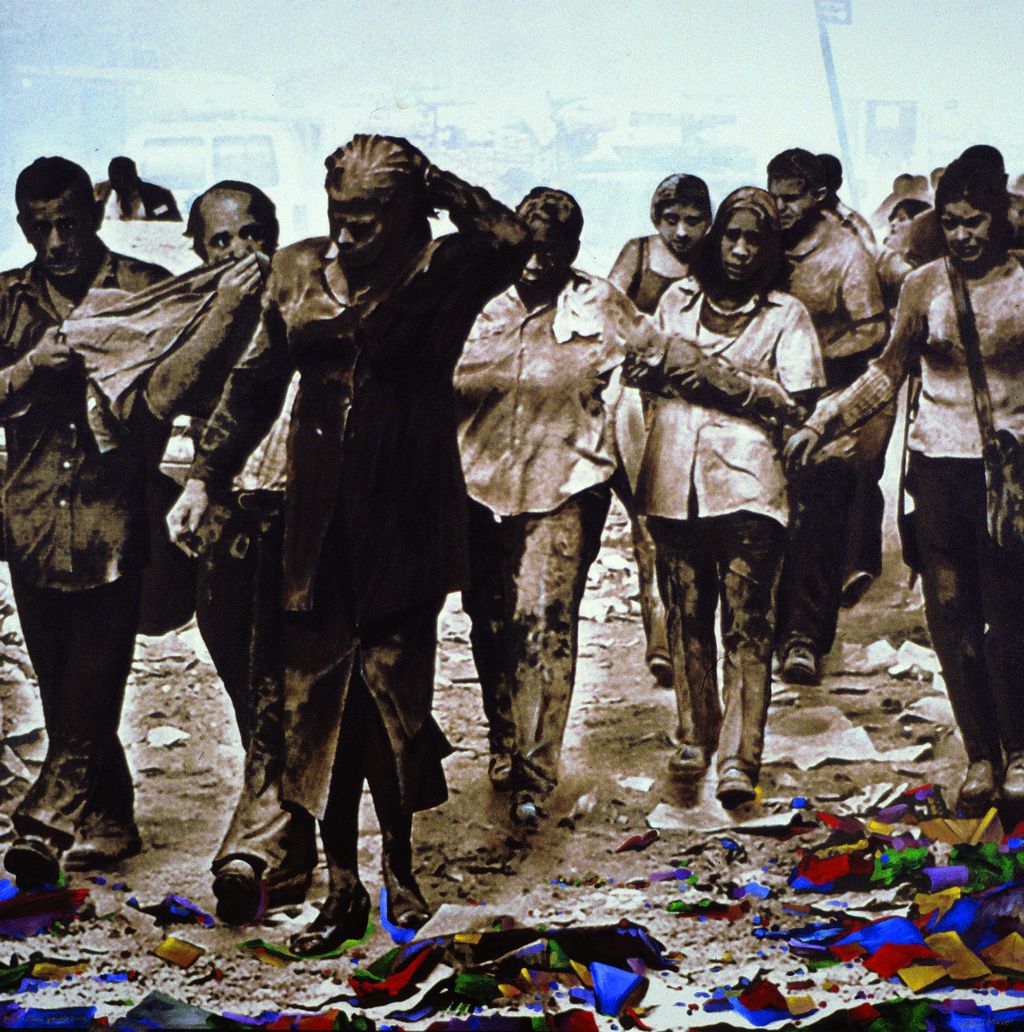Manhattan people
One year after the turmoil caused by the attacks of 9-11, Miró reworked one of the most widely-used photo shoots in the media. As Fernando Castro explained, “the artist’s metropolitan gaze” was naturally drawn by the 9-11 attacks in 2001, which was an earth-shattering event.”
The painting is based on reality, which “progressively settles on his works”, as Fernando Castro noted, “usually filtered through the media or a camera”. On this occasion, the work takes a singular picture that formed part of the massive amount of information used to cover the event.
The depiction of the scene can be linked to a new “awareness of painting” in the conceptual terms framed by Roma de la Calle. Here, as Cerdán Tato noted, the goal is to ensure the “pictorial permanence” of what the mass media showed us, which stayed in our memory. In Fernando Castro’s words, this is a manifestation of a reflective index that can be understood as an act of homage to the victims and as a denunciation of terrorism.
The transformation of a photo into a work of art involves various alterations in ways that sometimes seem slight but that are nevertheless significant. Wences Rambla explained that “the plastic reversal of those events” takes place by presenting the image in another way, “following the order chosen by the painter”. Thus, the frame has been modified, making it square and eliminating the right side of the horizontal image, in which a citizen walks in the opposite direction. The sequencing of planes is intensified to give greater depth and to make the figures stand out against the background, which is given a washed-out appearance. Some of the papers and other objects that have fallen to the ground are coloured.
It seems clear that the artist has chosen to focus his gaze on the most dramatic part, namely the bewilderment in the faces and gestures of the people coming towards the viewer. Yet it is clear that, together with drama, Miró has tried to hold out hope — albeit somewhat ironically — by introducing colour.
In short, we are dealing with an image that is nothing more than “a critical pause in a swift succession of events”, as Fernando Castro put it. This painting forebodes the “Necropolis” sub-series (in which people disappear from the picture and the shots are bird’s eye views) and is a harbinger of later key works such as Pols blanca [White Dust]. In those works, the artist adopts similar criteria in depicting New York City.
Santiago Pastor Vila
